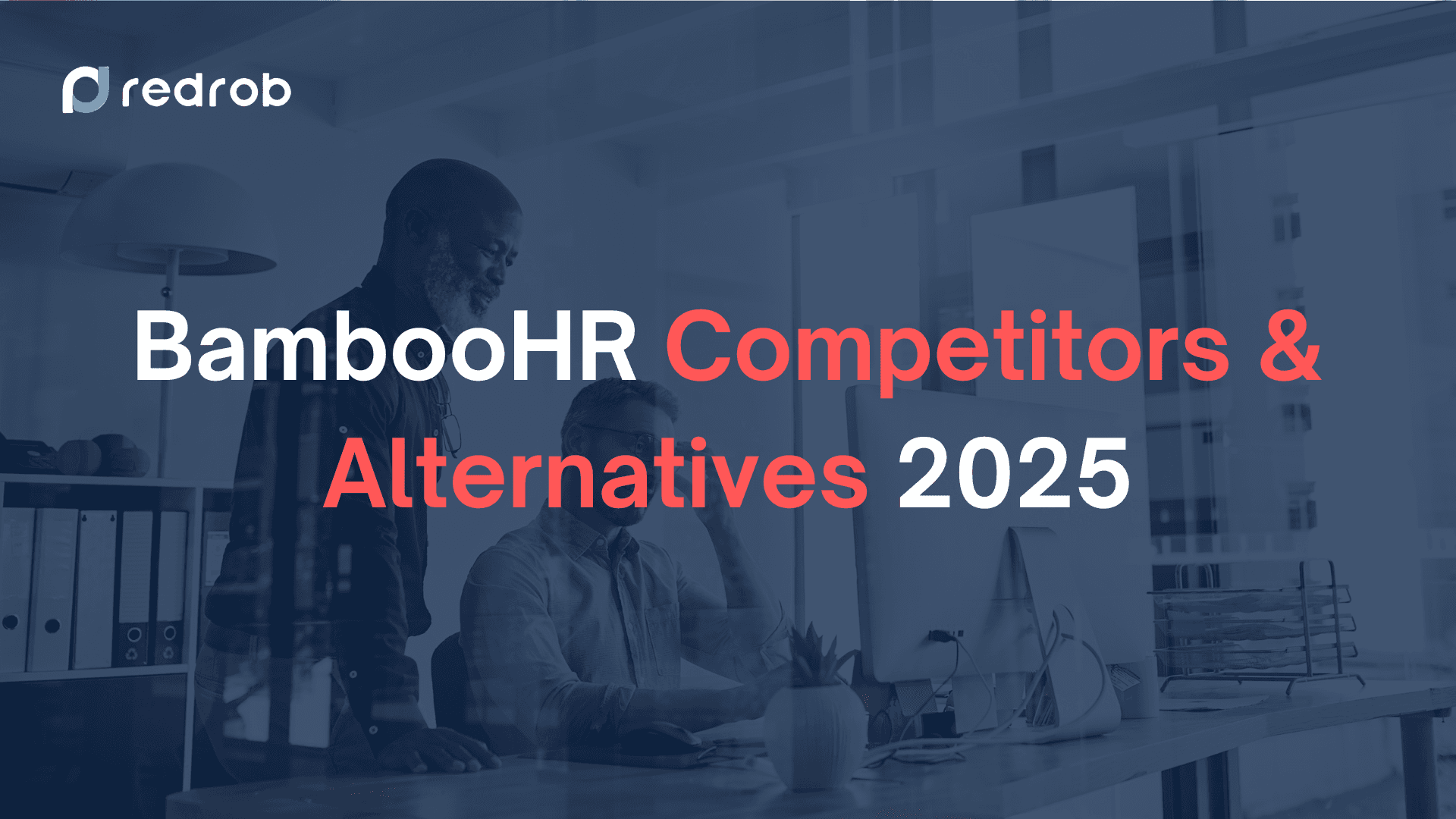Recruitment
10 min read
•
Oct 2, 2024

Soumyata Singh
While there are hundreds of worthy candidates waiting to be a part of your progressive team, identifying them from amongst thousands of applications is a real task. To make sure that you bring the best candidate on board, it’s crucial that you follow the best practice recruitment process and make reliable decisions.
Did you know? According to the Economic Times, one bad hire can cost you more than INR 20,00,000. In 2021, in an updated post, ETHRWorld said, the loss can be up to 15%-21% of that employee’s annual salary. Therefore, you should be doing everything in your power to make the best hiring decisions for your company. This blog is all about the best recruitment practices to help you onboard top talent. Keep reading!
Best Practices for Recruitment and Selection Process
To recruit the best you have to go beyond the candidates’ resumes and get one step ahead with your analysis. Here are some of the best practice recruitment process to ensure best decisions for your company:
1. Focus on Building Relationships
Building strong relationships with candidates is a core aspect of the best practice recruitment process. It allows you to connect with potential hires on a personal level, leading to higher engagement and offer acceptance. Let’s understand how you can nurture these relationships effectively.
Nurture Relationships with Potential Candidates
You should always prioritize improving relationships with candidates. Even if someone isn’t immediately available, maintaining contact can lead to future opportunities. Regular check-ins through email or LinkedIn keep you on their radar. This approach shows candidates that they are valued, not just for a single role, but for long-term opportunities within your company. Candidates are often more open to new opportunities if they’ve built a connection with a recruiter.
Reach Out to Passive Candidates for Unique Opportunities
Passive candidates—those not actively job hunting—are often your best talent pool. Reaching out to them shows initiative and opens up the conversation about future possibilities. Tailor your approach to their career goals or interests. For instance, if you know someone is passionate about remote work, highlight your company’s remote-friendly policies. By including them in your recruitment pipeline, you’re strengthening your best practice recruitment process and offering unique roles they might not have considered.
Create the Right Offer Based on Individual Candidate Needs
The right offer isn’t just about salary—it’s about understanding what matters most to the individual. Some candidates prioritize flexibility, others value a dynamic workplace culture. Craft offers that reflect these needs. For example, if a candidate values work-life balance, offer a flexible schedule or remote work options. Tailoring your offer based on their preferences ensures you meet their expectations and stand out among other employers.
Use Statistics to Tailor Offers
To make informed offers, rely on data. Use industry statistics and company-specific insights to align your offers with candidate expectations. For example, these days, employees prefer to work from home part-time or more. Offering remote work options or a hybrid schedule can significantly increase offer acceptance rates. Additionally, showcase your workplace culture by using metrics like employee satisfaction scores or diversity data. These statistics provide concrete reasons for candidates to choose your company, improving your best practice recruitment process.
Building relationships is just the beginning. Clear and informative job descriptions have a great impact when reaching out to potential candidates.
2. Write Clear and Impactful Job Descriptions

As part of the best practice recruitment process, you should create excellent job descriptions. It sets the tone for what candidates can expect and helps you attract the right talent. Here’s how to make your job descriptions clear, impactful, and aligned with your recruitment goals.
Make Sure Your Company Brand Reflects in Job Descriptions
Your job description should reflect your company’s brand and culture. Candidates want to understand what your company stands for before applying. If your company promotes innovation, make that clear in the description. Use language that mirrors your company’s values and tone. For example, a tech startup might use casual and dynamic language, while a law firm may opt for a more formal approach. This ensures the description appeals to those who align with your company culture, improving the best practice recruitment process.
Use Specific Details and Straightforward Job Titles
Being specific is essential when writing job descriptions. Use clear, straightforward job titles that accurately describe the role. Avoid jargon or creative titles that may confuse candidates. For instance, instead of “Marketing Guru,” use “Digital Marketing Specialist.” Along with a straightforward title, provide details about day-to-day responsibilities, team size, and reporting structure. This level of clarity helps set the right expectations and attracts qualified applicants.
Highlight Must-Have vs. Nice-to-Have Requirements
It’s important to differentiate between must-have qualifications and nice-to-have skills. A long list of requirements can deter great candidates from applying, especially if they feel underqualified. List only the critical qualifications as must-haves. For example, if proficiency in certain software is essential, make that clear. Use a separate section for nice-to-have skills, such as experience in a specific industry. This helps you avoid missing out on talented candidates who meet most of your core requirements.
Utilize Calls to Action and Include Relevant Keywords
An effective job description always includes a clear call to action (CTA). Encourage candidates to apply by using action-oriented language, such as “Apply now” or “Join our team.” In addition, include relevant keywords throughout the description to optimize it for search engines. For example, if you're hiring for a remote role, include terms like “remote work” or “flexible schedule.” Optimized keywords make your listing more visible, an essential aspect of the best practice recruitment process.
Redrob lets you create detailed, clear, and action-oriented job posts hassle-free with the best AI-powered capabilities. It only takes basic details and a few clicks.
Create Your FREE Job Post Now!
3. Sourcing Talent Through Various Channels
Best practice recruitment process considers using a diverse approach to sourcing candidates. By exploring multiple channels, you increase your chances of finding top talent suited for your roles. Let’s see what you should do.
Leverage Social Media Platforms
Social media platforms provide a rich pool of potential candidates. LinkedIn, in particular, is one of the most effective platforms for professional networking. You can post jobs, connect with professionals, and engage in discussions. In fact, 87% of recruiters use LinkedIn to vet candidates. Facebook and Twitter are also useful for sourcing talent. They allow you to tap into passive candidates by promoting your brand through content and job postings. Posting relevant content helps build interest in your company while increasing visibility.
Attend Industry Events and Meetups
Industry events and meetups offer face-to-face networking opportunities. These events allow you to meet potential candidates in informal settings and build lasting relationships. You can also determine a candidate's passion for the industry by the events they attend. Whether it’s a technology conference or a local business meetup, these gatherings often attract highly skilled professionals who might not be actively looking for jobs. Including events as part of your best practice recruitment process can give you a competitive edge.
Use Niche Job Boards for Specialized Roles
When hiring for specialized roles, general job boards may not deliver the right talent. Niche job boards cater to specific industries or job functions. For example, Stack Overflow is ideal for hiring developers, while Behance is a great place to find creative professionals. These platforms attract candidates with the specific skills you're looking for, allowing you to narrow down your search. Using niche job boards is an efficient way to fill roles that require unique expertise.
Implement Boolean Search Strategies
Boolean search strategies help you find candidates more efficiently by refining your search results. By using specific keywords and operators like “AND,” “OR,” and “NOT,” you can filter out irrelevant candidates and target those who meet your exact criteria. For example, searching for “Java AND Python NOT entry-level” allows you to focus on experienced developers who know both programming languages. Implementing Boolean searches is a smart way to streamline your best practice recruitment process.
4. Screening and Pre-Selection Methods

Screening and pre-selection are critical aspects of the recruitment process. They help you filter out unsuitable candidates early on, ensuring you focus on the most promising talent. Here’s how to effectively screen candidates and improve your hiring accuracy.
Screen Resumes Thoroughly and Use Blind Screening to Avoid Bias
Resume screening is often the first step in evaluating candidates. It helps you identify those who meet the minimum requirements. However, it’s easy to let unconscious bias slip in during this process. To avoid this, you can implement blind screening methods. By removing details such as names, gender, or school information, you can focus purely on skills and experience. Blind screening improves diversity, as it minimizes bias based on irrelevant factors.
Conduct Phone Screenings or Use Chatbots to Align Expectations
After resume screening, phone screenings are a quick way to further narrow down candidates. These short conversations help you verify important details and ensure that the candidate’s expectations match the role. If you're handling high volumes of applicants, consider using chatbots to streamline this process. Chatbots can ask basic screening questions and provide real-time feedback, making your best practice recruitment process more efficient. For instance, a chatbot can handle questions about salary expectations or availability.
Utilize Pre-Employment Assessments Like Cognitive Tests and Job Simulations
Pre-employment assessments provide additional insight into a candidate’s skills and suitability for the role. Cognitive tests, for example, evaluate problem-solving abilities and critical thinking. Job simulations, on the other hand, allow candidates to perform tasks they would do in the role. These methods provide objective data that helps in selecting candidates who are the best fit.
With Redrob you can:
Reduce candidate screening time by 60%
Get customizable skill-based and cognitive assessments
Save 92% of hiring time and 88% of costs
Know more about our hiring solutions.
5. Conduct Effective Interviews
Interviews play a significant role in the best practice recruitment process. A well-structured interview allows you to assess candidates thoroughly and make informed decisions. Here's what to consider for effective interviews that align with your hiring goals.
Structured vs. Unstructured Interviews
Structured interviews are standardized. You ask each candidate the same set of questions in the same order. This method ensures consistency and reduces bias. On the other hand, unstructured interviews are more casual and allow for flexibility. While structured interviews are more reliable for comparing candidates, unstructured interviews can reveal unique insights about a candidate’s personality.
Prepare Questions Linked to Job Requirements
Your interview questions should always reflect the job requirements. Focus on specific skills and experiences necessary for the role. Tailoring questions helps you evaluate a candidate’s capability to perform tasks relevant to the position. For example, if you're hiring a software developer, you could ask questions about coding challenges they’ve faced in past projects. This approach ensures your best practice recruitment process is aligned with job expectations.
Use the STAR Method for Systematic Evaluation
The STAR method (Situation, Task, Action, Result) is a structured way to evaluate a candidate's past experiences. You ask them to describe a situation they were in, the task they had, the action they took, and the result they achieved. This approach offers a clear, systematic way to assess how candidates handle real-world challenges. It allows you to understand not just what they did but how they think through problems.
Assess Candidates’ Fit Using a Job Scorecard
A job scorecard helps you rate candidates on major criteria, such as skills, experience, and cultural fit. By assigning scores, you can objectively compare candidates and make decisions based on data. This is especially useful when comparing candidates who seem equally qualified on the surface. The job scorecard can also highlight areas where a candidate might need development.
6. Using Data-Driven Recruiting Practices
Incorporating data into your recruitment process is one of the best practices for making informed hiring decisions. By tracking and analyzing key metrics, you can improve efficiency and accuracy in your recruitment efforts.
Leveraging Data to Improve Hiring Processes
Data helps you identify patterns in your recruitment process. It allows you to see where candidates drop off or where delays occur. For instance, if your time to hire is longer than the industry average, data will reveal the stages where bottlenecks are present. With this insight, you can optimize your process for better results. In fact, companies that use data-driven recruitment report 19% higher success rates.
Monitoring Key Metrics
Tracking metrics such as time to hire, cost per hire, and offer acceptance rate gives you a clear picture of your recruitment efficiency. For example, if your offer acceptance rate is low, it may indicate that you need to improve your offer packages. Monitoring time to hire ensures that your recruitment process remains streamlined and competitive. These metrics contribute significantly to the best practice recruitment process.
Standardize the Recruitment Process and Take a Data-Driven Approach
Standardization helps you maintain consistency across the recruitment process. By integrating a data-driven approach, you can make decisions based on facts rather than gut feeling. Standardizing ensures that every candidate goes through the same process, reducing bias and improving transparency.
7. Implementing Advanced Recruitment Tools

Advanced recruitment tools significantly optimize your recruitment process. These tools help streamline operations, maintain candidate relationships, and manage employee data effectively.
Use Applicant Tracking Systems (ATS) for Streamlining
An Applicant Tracking System (ATS) automates the recruitment process, making it easier to manage applications. With an ATS, you can sort resumes, track applicants, and manage interviews all in one place. It's an essential tool for keeping your recruitment organized and efficient.
Redrob’s ATS gives you complete control, standardized hiring process, and saves hiring costs and time significantly. Know more about our ATS.
Incorporate Recruitment CRMs to Maintain Candidate Relationships
Recruitment CRMs are crucial for nurturing relationships with potential candidates. They allow you to store candidate details, track communication, and manage follow-ups. This is especially helpful when working with passive candidates or creating a talent pool for future roles. A best practice recruitment process should include regular engagement with potential hires, and CRMs help achieve this.
Manage Employee Data Better With HRIS Systems
Human Resource Information Systems (HRIS) make it easier to manage employee records. These systems store data related to payroll, benefits, and performance reviews. By using HRIS, you can ensure a smooth transition from candidate to employee.
Boost Your Hiring Efficiency With Redrob
Best practice recruitment process ensures you make reliable decisions for the company throughout the pipeline and bring the best talent on board. This may otherwise become complicated and confusing when you have thousands of applications to review. We hope the above-mentioned best practices for recruiting and selection help you along the way.
As said earlier, recruiting tools make things rather data-driven and more streamlined. Redrob is one such recruiting solution you need. What do you get?
An excellent ATS for complete streamlining
Easy job posting and sophisticated job boards
Online interview management
3500+ customizable skill assessment tests
Customizable pricing plans for your specific hiring requirements
Get to know us better and Start your FREE Trial Now!



